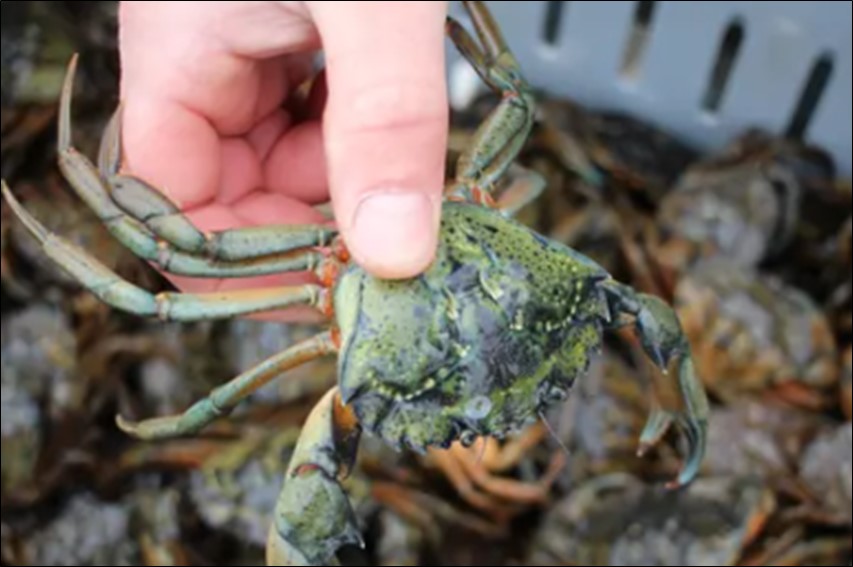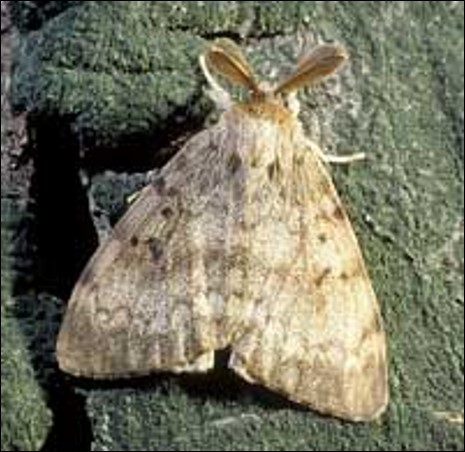
The European green crab (Carcinus maenas) is a damaging invasive species that poses a threat to native shellfish, eelgrass, and estuary habitat critical for salmon and many other species.
Chances are you’ve heard about invasive species of animals or insects in the news. If these aren’t controlled effectively, they can cause economic damages to agriculture, recreation, and public utility infrastructure. There is also an increased risk of environmental harm, including to threatened and endangered species.
There are some amazing water bodies in this state — it can take a lot of work to maintain the health of rivers, lakes, and saltwater areas. For the most part, this means we work to reduce the amount of chemicals going into the water. However, there are situations when certain chemicals can actually help control fish, animals, and insects that would otherwise cause environmental damage.
“The Washington Department of Fish and Wildlife manages aquatic invasive species in many areas around Washington, including species of greatest concern such as European green crabs, zebra mussels, and quagga mussels,” said Jesse Schultz, Prevention Lead for WDFW’s Aquatic Invasive Species Unit. “We coordinate closely with other state and federal agencies, tribes, local governments to control these harmful invaders, and to prevent them from spreading to other waterbodies. In some cases, our biologists and technicians carefully apply chemicals to eradicate invasive species or to stop their spread, doing everything possible to reduce negative impacts on native species and aquatic ecosystems.”
Managing invasive and introduced species of fish, animals, and insects
Our permitting program allows the use of registered pesticides that are approved by EPA and the Washington State Department of Agriculture, often called the Agriculture Department. To make sure these pesticides meet state laws, we further review the chemicals through an environmental impact statement.
The general permit
Water quality permits are a legal tool to limit the discharge of pollution into water. Each permit is different and sets specific methods for release, monitoring, and mitigating any potential environmental damage. A water quality general permit is a type of permit that regulates similar industry activities under one permit. If each applicant meets the requirements of the permit, they are granted conditional authorization to discharge. The permit holder must follow the conditions and requirements in the permit. Failure to do so can result in enforcement action.
We're currently working to issue a new Aquatic and Invasive Species Control general permit. This permit will combine three previous permits for two other state agencies: the Washington State Department of Fish and Wildlife, also known as WDFW, and the Agriculture Department. This type of control work is not new, but we are proposing updates to the existing requirements. The chemical treatments allowed under the new permit have been happening since 2011.

What’s in the permit?
The Aquatic and Invasive Species Control general permit requires state agencies to consider different management solutions as part of an integrated pest management approach, often called IPM. The goal is to have the least environmental impact among reasonably available options.
It is common to use several different approaches to control invasive species. Because of the widespread damage and economic impact that invasive species can cause, chemicals are sometimes the most effective solution to control them. Non-chemical approaches to invasive-species control can include physical removal, biological controls, and education-and-outreach programs such as Clean, Drain, and Dry.
The draft permit ensures that the chemicals used, and the methods by which they’re applied, are the least harmful to other animals or insects. It limits which chemicals are allowed, where they can be used, and who may use them. It also requires public notification before an area is treated and outlines specific rules about the reporting and timing of application.
If the Ag Department and WDFW decide to use chemicals in or near water to control fish, invasive animals, or insects, they will have to apply for coverage under the new permit. Our role will be to make sure any allowable chemical use is done safely under the permit and in accordance with the law.
Signs for modern times
As part of this permit, we are proposing the use of a new style of shoreline sign as part of the public notification process. These signs are currently required whenever pesticides are used and have a warning statement at the top, usually “Caution,” “Warning,” or “Danger,” to signify the warning level followed by specific written information.
By using graphics and text, we hope the new sign templates result in better understanding and public health protection.
What else is new?
In addition to updated sign templates, most updates to the draft permit are clarifications and refinements. All proposed changes can be found in the permit fact sheet. Here are a few highlights:
- Expanding the scope of permit coverage to include control for all types of invasive insects, beyond the previous permit limited to two species of moths.
- Ensuring the permit provides the flexibility needed to respond to future invasive species.
- Clarifying the monitoring that the permittees must do before and after chemical treatments.
- Improving shoreline signage as described above.
- Updating language for sampling, field measurements, laboratory accreditation, and electronic reporting requirements.
We invite your participation
We ask for public comment on a draft before we issue or reissue a general permit. The comment period opened Dec. 21, 2022. We have extended the comment period from Feb. 6 to Feb. 21 at 11:59 p.m. We are hosting two online public workshops and hearings on the draft permit — 10 a.m. on Jan. 24 and 5:30 p.m. on Jan. 25. At each workshop, we’ll give a presentation to help explain the draft permit and answer questions.
Following the workshop, the hearing will provide an opportunity for the public to provide formal oral testimony. Oral testimony receives the same consideration as written comments by mail or online. The public hearing will begin immediately following each workshop and will conclude when testimony is complete.
There are three ways to comment
Online: Submit your comments through our online comment form (preferred method).
By mail:
Shawn Ultican
Washington State Department of Ecology
P.O. Box 47696
Olympia, WA 98504-7696
In person virtually: You may provide verbal comments during any of our public hearings
The workshops and hearings will be held:
Online workshop: Jan. 24, 2023, 10:00 a.m.
Join the morning Zoom meeting
Online workshop: Jan. 25, 2023, 5:30 p.m.
Join the evening Zoom meeting
The workshops and hearings offered online allow individuals to view the presentation and provide testimony by computer, phone, or other mobile device.
Additional information on how to comment is available on the permit webpage.
Next steps
After we receive and consider all public comments, we will make necessary changes, respond to comments, and make a final decision on permit issuance. We expect to have a decision by March 2023.



